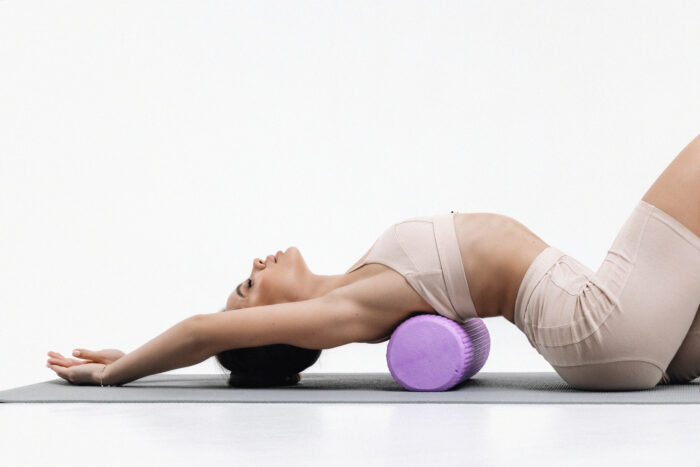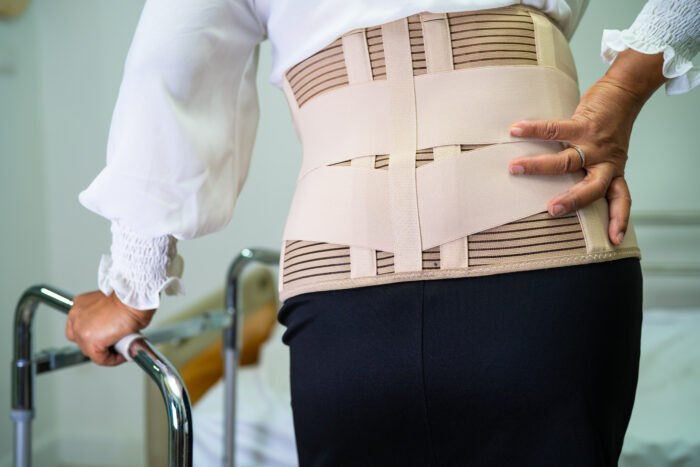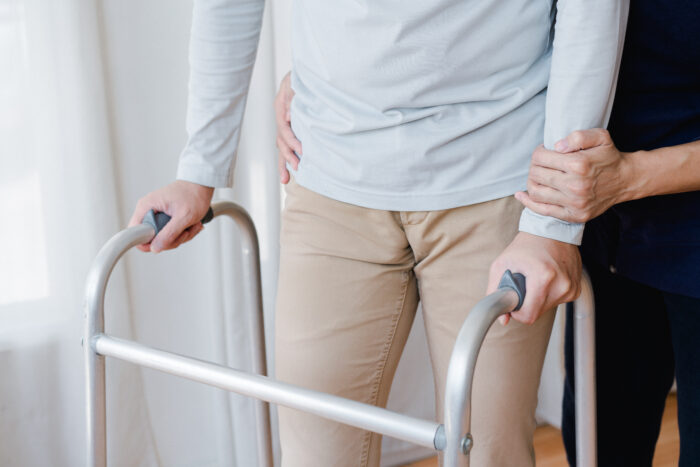Rehabilitating a lumbar strain involves several stages aimed at reducing pain, restoring function, and preventing future injuries.
Here’s a comprehensive approach to rehabilitating a lumbar strain…
Phase 1: Acute Phase (Initial Management)
- Rest and Protection
- Initially, rest is crucial to allow the injured tissues to heal. Avoid activities that exacerbate pain, such as heavy lifting or prolonged sitting.
- Use a lumbar support or brace, if recommended by a healthcare provider, to stabilize the spine and reduce movement.
- Ice Therapy
- Apply ice packs to the affected area for 15-20 minutes every 2-3 hours during the first 48–72 hours to reduce pain and inflammation. Use a cloth or towel to protect the skin.
- Pain Management
- Over-the-counter nonsteroidal anti-inflammatory drugs (NSAIDs) such as ibuprofen or acetaminophen may help alleviate pain and reduce inflammation, as advised by your healthcare provider.
Phase 2: Subacute Phase (Restoration of Range of Motion and Strength)
- Gentle Stretching
- Begin gentle stretching exercises to improve flexibility and range of motion in the lumbar spine and surrounding muscles. Perform each stretch slowly and hold for 15–30 seconds. Examples include:
- Knee-to-chest stretch: Lie on your back, bring one knee towards your chest, and hold it with both hands.
- Child’s pose: Kneel on the floor, sit back on your heels, and reach your arms forward while lowering your chest towards the floor.
- Begin gentle stretching exercises to improve flexibility and range of motion in the lumbar spine and surrounding muscles. Perform each stretch slowly and hold for 15–30 seconds. Examples include:
- Core Strengthening
- Strengthening the core muscles (abdominals, obliques, and back extensors) is crucial for stabilizing the spine and preventing future injuries. Start with gentle exercises such as:
- Pelvic tilts: Lie on your back with your knees bent, and gently flatten your lower back against the floor.
- Partial crunches: Lie on your back with your knees bent, and lift your head and shoulders off the floor while keeping your lower back on the ground.
- Bird-dog exercise: Kneel on your hands and knees, and extend one arm and the opposite leg while keeping your back flat.
- Strengthening the core muscles (abdominals, obliques, and back extensors) is crucial for stabilizing the spine and preventing future injuries. Start with gentle exercises such as:
- Low-Impact Aerobic Exercise
- Incorporate low-impact aerobic activities such as walking, stationary cycling, or swimming to improve cardiovascular fitness and promote overall healing. Gradually increase duration and intensity as tolerated.
Phase 3: Functional Rehabilitation and Return to Activity
- Progressive Strengthening
- Advance core strengthening exercises and gradually introduce more dynamic exercises that simulate daily activities or sports-specific movements. Examples include:
- Bridge exercises – Lie on your back with your knees bent, and lift your hips off the floor while squeezing your glutes.
- Side-lying leg lifts – Lie on your side, and lift your top leg while keeping your torso stable.
- Advance core strengthening exercises and gradually introduce more dynamic exercises that simulate daily activities or sports-specific movements. Examples include:
- Functional Training
- Incorporate exercises that mimic real-life movements and activities to improve coordination, balance, and overall functional capacity. Examples include:
- Squats with proper form – stand with feet hip-width apart, and bend your knees and hips while keeping your back straight.
- Lunges – Step forward with one leg and lower your body until both knees are bent at 90 degrees.
- Incorporate exercises that mimic real-life movements and activities to improve coordination, balance, and overall functional capacity. Examples include:
- Education and Prevention
- Learn proper body mechanics and ergonomic principles to prevent re-injury. Focus on maintaining good posture, using proper lifting techniques, and implementing strategies for stress management.
General Recommendations
- Gradual Progression – Increase intensity, duration, and complexity of exercises gradually as pain subsides and strength improves.
- Monitoring Symptoms – Pay attention to pain levels during and after exercises. Modify or stop activities that cause increased pain or discomfort.
- Consistency – Perform rehabilitation exercises regularly, ideally daily or as recommended by your healthcare provider, to maintain progress and prevent setbacks.
- Professional Guidance – Consult a physical therapist or healthcare provider for a personalized rehabilitation plan tailored to your specific condition and needs. They can provide hands-on techniques, monitor progress, and adjust the program as necessary.
Rehabilitating a lumbar strain requires patience and adherence to a structured program aimed at restoring function and preventing future injuries. Follow healthcare professionals’ guidance and gradually reintroduce activities to minimize the risk of recurrence. If you experience persistent or severe pain, seek medical advice promptly for proper evaluation and treatment.
Related Posts
What Pillow Should I Use For Lower Back Pain?
On
November 25, 2024
Why Does It Hurt When I Use Lumbar Support?
On
October 26, 2024
What Is The Best Painkiller For Lumbar Spine Pain?
On
January 21, 2025
What Is The Best Cushion For Lower Back Pain?
On
December 1, 2024



